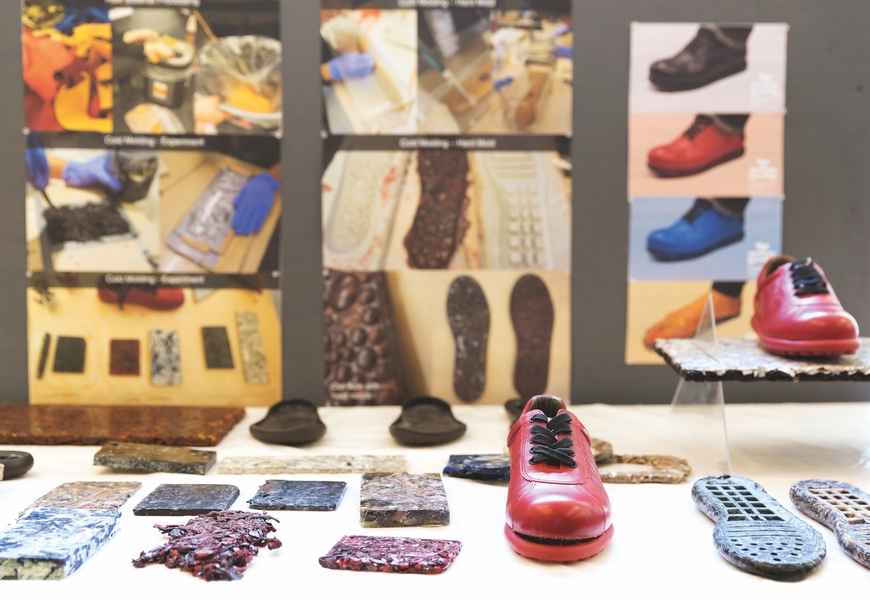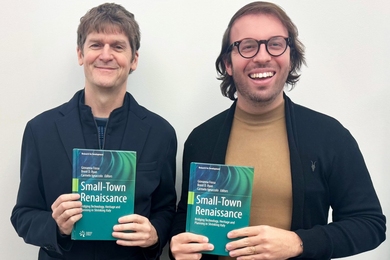MIT has an established tradition of graduate education that combines engineering and management. A new master’s program has developed a third component: the integrated design process and the power it brings to solving not just management and engineering problems but social problems as well.
The Integrated Design and Management (IDM) Program is an outgrowth of the graduate course 15.783 (Product Design and Development), which brought together MIT students in engineering and management with industrial design students from the Rhode Island School of Design (RISD). For several years, professor of management science and innovation Steven Eppinger ’83, SM ’84, ScD ’88, who is the co-author of a widely used textbook also titled "Product Design and Development," taught that course with IDM program director Matt Kressy (then at RISD), along with various engineering faculty members. The new IDM program, which enrolled its first students in Fall 2015, leads to an MS in engineering and management. IDM is offered jointly by the School of Engineering and MIT Sloan School of Management, and is targeted at early- to mid-career professionals.
IDM aims to attract equal cohorts of students with engineering, business, and industrial design backgrounds. The program’s admissions criteria emphasize the attribute of altruism along with creativity and achievement. Candidates are rated on test scores and a portfolio, but also on what Kressy calls the “love metric.”
“Shouldn’t we be predisposed to select people with compassionate, loving visions?” Kressy says. “You can’t test for that, but I think it’s important.”
IDM prepares its graduates to become leaders in industrial design, engineering, or innovation at large firms, as well as entrepreneurs who create things that are profitable while also improving the world. One of the goals is for students to use what they’ve learned to bring new perspectives to deeply complex social problems. Suppose the desired “product” were a method or approach for ending violent encounters between police and black men. Using the integrated design process, a team composed of experts from several disciplines would “embed” with all the stakeholders (police officers, black citizens, policy makers, and others), and propose a solution that takes into account the full array of constraints and viewpoints.
“In design thinking, we use the word ‘empathy’ all the time,” Kressy says. “The design process starts with developing a deep connection with your customer. You make an emotional connection to a problem, and with that connection comes insight.”
Along with engineering and management foundation courses and electives, IDM students learn the tools and methods of design in the ID Lab, located in the International Design Center. For their theses, students approach the design of a product or service by researching the market and formulating a business plan.
For example, Huda Jaffer SM ’16, the first student to complete IDM, examined investments in renewable energy technologies in the developing world. She researched the needs of various stakeholders — underserved communities, designers of renewable energy technologies, and the potential investors in those technologies — to propose guidelines for investors to gauge an energy technology’s “holistic sustainability,” that is, its potential to offer a positive social or environmental impact as well as a financial return.
“Engineers’ responsibilities have expanded substantially over the last 25 years. They’re now expected to understand the entire system that will influence the product they’re developing,” says professor of mechanical engineering Warren Seering, who is faculty co-director, along with Eppinger, of IDM.
“I’ve noticed that many industries have begun to emphasize design leadership, and I think the IDM program is perfectly positioned to create those leaders,” says second-year IDM student Sara Remsen, whose undergraduate majors were biology and digital arts. Remsen is collaborating with the MIT Media Lab’s Responsive Environments group to design new augmented/virtual reality experiences that explain the ecological processes of a recently restored wetland. The idea is to bring the story alive for visitors to help them better understand the benefits of restoration. Learning firsthand about stakeholders’ needs in the context of the larger environment “results in a more creative concept generation process,” Kressy says. “Combine that with the analytical element we’ve traditionally taught here at MIT and you end up with a very powerful way to solve problems.”






